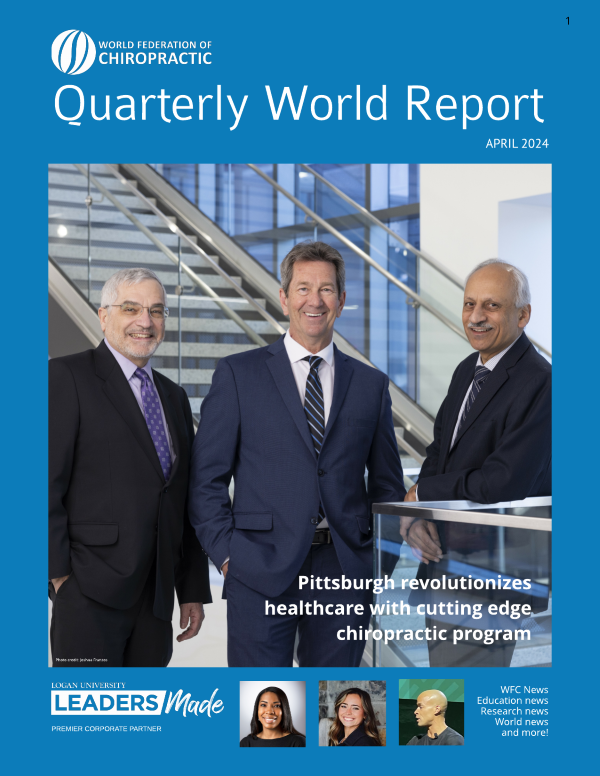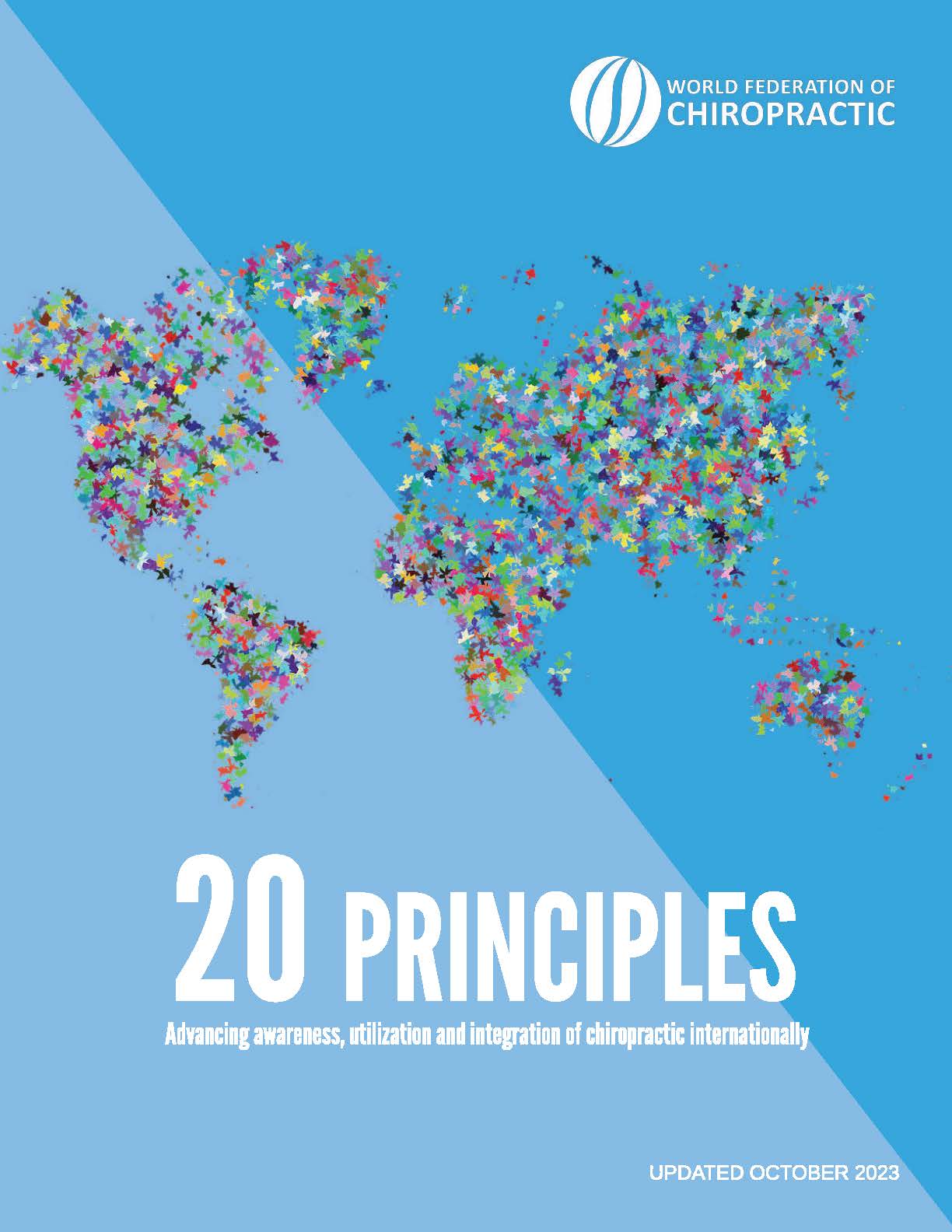Eventos/Reuniones  Conferencias de Educación
Conferencias de Educación  Consensus Recommendations
Consensus Recommendations
 Conferencias de Educación
Conferencias de Educación  Consensus Recommendations
Consensus Recommendations
2004 Education Conference
Patient Examination, Assessment and Diagnosis in Clinical Education
October 13-16, 2004, Toronto, Canada
Consensus Statements
I. Introductory Matters
The subject of this conference was chosen in response to the following conclusion and consensus statement at the WFC/ACC Sao Paulo Conference in October 2002:
“With respect to patient examination, assessment and diagnosis, there is a wide variance in methods taught and practiced, and there would be value in a conference of a similar nature to the current one seeking a consensus that would promote greater consistency in chiropractic education and practice in this area.”
1. With respect to examination and assessment in chiropractic education:
-
As a result of the presentations and discussions at this meeting, it seems that the wide variance in methods taught at chiropractic degree programs that was asserted in 2002 does not exist.
Evidence in support of this conclusion included a review of the areas of patient history, general physical examination, orthopedic and neurologic examination, diagnostic imaging and clinical laboratory testing with respect to specific examples put forth by the organizers. Part of the evidence was the response of clinical faculty to a pre-conference multi-media survey demonstrating patient examinations and assessments. -
As would be expected in an evaluation of patient examination and assessment procedures taught at a variety of educational programs in many countries, there are differences in emphasis, content, and manner, but there is also a consistent core of common procedures.
-
2. With respect to diagnosis in chiropractic education:
-
It is agreed that the responsibility to diagnose is an essential part of the practice of chiropractic, for reasons that include patient protection, an appropriate clinical investigation in primary contact practice, patient referral where necessary and assurance that patients are afforded the most appropriate care possible.
-
There is a significant variance, however, in how students are taught to describe and communicate diagnoses.
-
3. With respect to examination, assessment and diagnosis in the field:
-
The participants felt that there is a much wider variance of patient examination, assessment procedures and diagnosis in chiropractic practice than in education.
-
Registration boards, boards of examiners, professional associations, specialty bodies, technique affiliated groups and others are encouraged to work in conjunction with educational institutions to investigate methods to minimize the variance seen in these areas in practice.
-
II. General Matters
- Principal Focus of Examination. Within the parameters of a full patient assessment, the principal focus and specialized interest of the chiropractor is and should continue to be the functional assessment of the spine and peripheral joints, and the spine’s relationship to the nervous system.
- Multidimensional Approach. Patient examination and assessment procedures should be multidimensional, utilizing procedures and methods bearing the highest levels of evidence available, and accompanied by appropriate outcome measures.
- “PARTS” System. The “PARTS” system* is an example of an appropriate framework for a multidimensional approach to chiropractic examination, assessment and diagnosis. The adoption of a conceptual model of this nature as a foundation for clinical education is encouraged. PARTS is an acronym of the following diagnostic criteria:
P - Pain/tenderness
A - Asymmetry/alignment
R - Range of motion abnormality
T - Tone/texture/temperature of soft tissues
S - Special tests (e.g. imaging and laboratory tests)
- Integration of Active Learning Methods throughout Curriculum: Active learning methods should be an integral part of instruction throughout the curriculum, including the utilization of problem-solving exercises, real-life cases in didactic subject-matter, and patient encounters. As students progress through experiential learning, appropriate assessment of their performance is essential.
- Matters to Emphasize in Education. Education and training opportunities should include a wide variety of patient presentations, with an emphasis on those found in the routine practice of chiropractic, and those that hold the greatest opportunity for patient risk and complication.
- Diagnostic Imaging and Special Studies:
The participants agree that the use of diagnostic imaging and special studies (e.g. clinical laboratory tests), based on recognized utilization guidelines and protocols and for the purpose of identifying pathology, should be a part of chiropractic education and practice. The enhancement of program curricula to provide greater student exposure to imaging technologies beyond plain film radiography is encouraged. There needs to be further study and evidence to support the use of ionizing radiation for technique specific purposes. - Language. It is expected that programs offering chiropractic education will encourage respect for the traditional language of the chiropractic profession (e.g., subluxation, vertebral subluxation complex and chiropractic spinal adjustment) as well as an appreciation of the need for common health sciences terminology (e.g., joint dysfunction, mobilization, manipulation) that may be useful in communication with persons in other disciplines and practice settings. The participants had varied opinions with respect to definition and use of these terms. Appreciation of the nuances associated with these terms is encouraged and it is understood that in certain situations these terms may require contextual interpretation.
III. Prospective Matters
- Emerging Practice Environments. The chiropractic profession will see a continued lessening of the isolation that marked its first century. The participants desire to see students and practitioners better prepared to move effectively and with authority into emerging environments.
- Inter-professional Communication. The ability of students and practitioners to communicate effectively and efficiently with persons of other disciplines, particularly health care disciplines, must be enhanced and refined. Therefore, curricular emphasis in this regard must be strengthened. In addition, continuing education and professional development efforts with respect to this need are important and desired.
- Professionalism. In teaching and assessing issues related to professionalism, institutions should use real-life examples of unacceptable variations of examination, assessment, and diagnosis practices.
- Cooperative Development of Best Practices. Chiropractic programs and institutions around the world are encouraged to maximize the contribution of their respective faculties by developing an inventory of key interests and talents, and to pursue a system that would provide for the sharing of these assets among the profession’s programs and institutions.
- Soft-Tissue Dysfunction. The functional examination and assessment of soft-tissue dysfunction should be integrated within chiropractic clinical education.
- Competency Assessment. Clear, appropriate and criterion-based assessment strategies are important in reliably assessing clinical competency. Institutions and programs are encouraged to continue to advance measures of this nature in their respective offerings.
- Educational Methods. Further incorporation of mastery-oriented and adult-learning methods in chiropractic programs will assist in improving the quality of student and practitioner knowledge, attitudes and skills. Clinically oriented and mentoring approaches in education are recommended with respect to patient examination, assessment and diagnosis.
- Clinical Laboratory Best Practices. The utilization of clinical laboratory examinations is an appropriate part of patient examination. Therefore it is important that the development of best practices for chiropractic practice should be undertaken, and included in the curriculum, notwithstanding that there are legal and other restrictions on the use of clinical laboratory diagnosis in some jurisdictions.
Professional bodies need to pursue standardized international legislation allowing the utilization of laboratory studies by chiropractors.
* See Bergmann TF Specific Chiropractic Assessment of the NMS System: Joints. Proceedings of the Conference on Patient Examination, Assessment and Diagnosis in Chiropractic Clinical Education, World Federation of Chiropractic and Association of Chiropractic Colleges, October 2004, 1.
Featured Videos
Buscar
Click here to see complete Corporate Partners List











